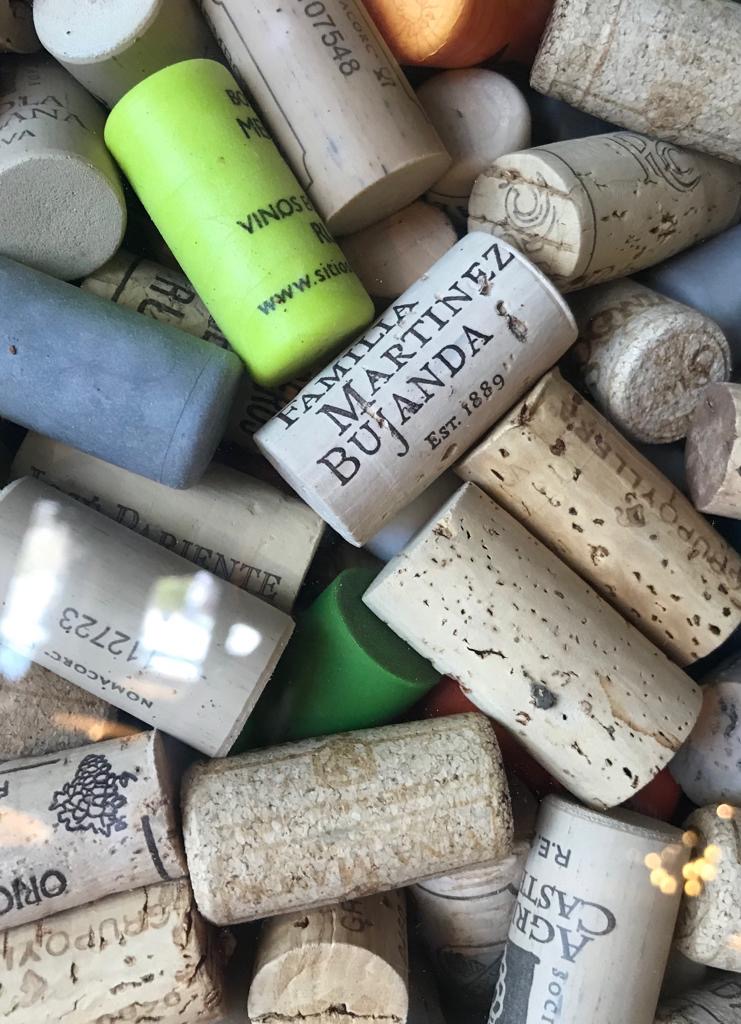For some years now, there has been a certain amount of debate about the stoppers that close wine bottles. There is a lot of talk about the advantages of natural cork, compared to synthetic or screw-on cork, but the truth is that, in most cases, the characteristics and advantages of each one of them are unknown.
Natural cork stoppers allow the wine to breathe, and in this way oxygenation takes place little by little and the wine evolves.
Until recently, cork was the only material that met the optimum conditions necessary to seal a bottle. The cork stopper has the ability to limit the entry of oxygen into the interior and thus delay the natural oxidation of the wine. These factors make it ideal for Crianzas, Reservas and Gran Reservas.
The trend towards the environmentally friendly and the high economic costs have led to the development of alternatives to this type of closure, including synthetic cork stoppers, plastic or silicone-based stoppers and metal screw caps.
But let’s take a closer look at the differences between them.
First of all, let’s talk about cork. The natural cork is extracted from the trunk of the cork oak, the bark and the tree is not damaged. This type of stopper prevents the wine from leaking out of the bottle, is very impermeable and long lasting. For this reason, it is the most suitable for ageing wines, which are expected to improve with time in the bottle and continue to evolve.
Bottles corked with cork should be placed at an angle to prevent the cork from drying out. As long as the cork is wet, it expands, sealing the bottle and dosing the entry of air from the atmosphere almost to a minimum, providing the wine with the oxygen that is naturally stored inside the cork.
Synthetic stoppers are made from plastic materials with elastic properties. Among their advantages are that they do not cause TCA problems, i.e. the wine smells and tastes of cork, they offer a wide range of colors and allow the corking ritual to be maintained. The disadvantage of these stoppers has to do with wine preservation, as they hardly allow oxygen to pass through, so they prevent the wines from evolving in the bottle.
An example of this type of plug is the silicone plug. This type of closure hermetically seals the bottle and prevents air from entering the interior. For this reason, it is ideal for young wines that are not expected to evolve and for quick consumption, i.e. to be consumed more or less within two years after bottling. The danger is that the wines oxidize faster and a slight absorption of aromas may occur, resulting in a slight loss of aromatic intensity.
These types of closures were initially totally airtight, although they are now being produced with various methods to allow the addition of oxygen to the wine. The problem is that over the years they begin to reduce in volume, thus losing sealing capacity in the bottle.
Finally, the screw cap is the easiest and most convenient to open, as no corkscrew is required. Like synthetics, it is used for young wines, for immediate consumption. It has also proven effective for white wines, whose freshness is maintained and, like the plastic ones, can be stored vertically.
The custom of screw caps is becoming established mainly in the hospitality sector, due to its cost and because it is very practical, as it allows the bottle to be opened and closed quickly and the wine to be served by the glass. This type of stopper detracts from the elegance and the ritual of uncorking the cork and also prevents the wine from breathing.
The appearance and use of the latter two types of closures, synthetic and screw cap, has been extended by wine producers in Australia, New Zealand and South Africa, mainly. Countries of Anglo-Saxon influence that are new wine producers worldwide and that have obviated the use of cork as a closure element. On the other hand, Spain, Portugal and France, cork producers, continue to rely on the traditional cork stopper.
Blog
Cork, synthetic and screw caps, much more than a fad




